Things to do in Olympic national park
The state of Washington is certainly a destination to be considered by all those who have the desire to organize an American Pacific North West itinerary. Those who love nature and want to discover some gems outside the classic tourist routes. It will surely find bread for their teeth here. In this regard, the Olympic National Park is an essential step that will give you the opportunity to explore very different landscapes and ecosystems while remaining within the same national park. Here, we are showing things to do in Olympic national park.
However, it is not as easy to visit as most of the other American parks. It is so extensive that there is no road that crosses it in its entirety. For this, it is better to get organized. To understand what you want to see before arriving. So. as not to lose too much precious time in the movements. Keep reading: What to do in Kuta?
The Olympic National Park is located in the state of Washington in what is commonly called the Olympic Peninsula. The distance from Seattle is a bit difficult to calculate because there are many points that can be accessed. Let’s say that, in principle, to reach the area of the park closest to the metropolis with your rental car. It will take about 2 hours and a quarter.
Things to do in Olympic national park
Keep in mind that this is a very rainy area throughout the year. So have the foresight to bring with your clothing that is suitable for every need.
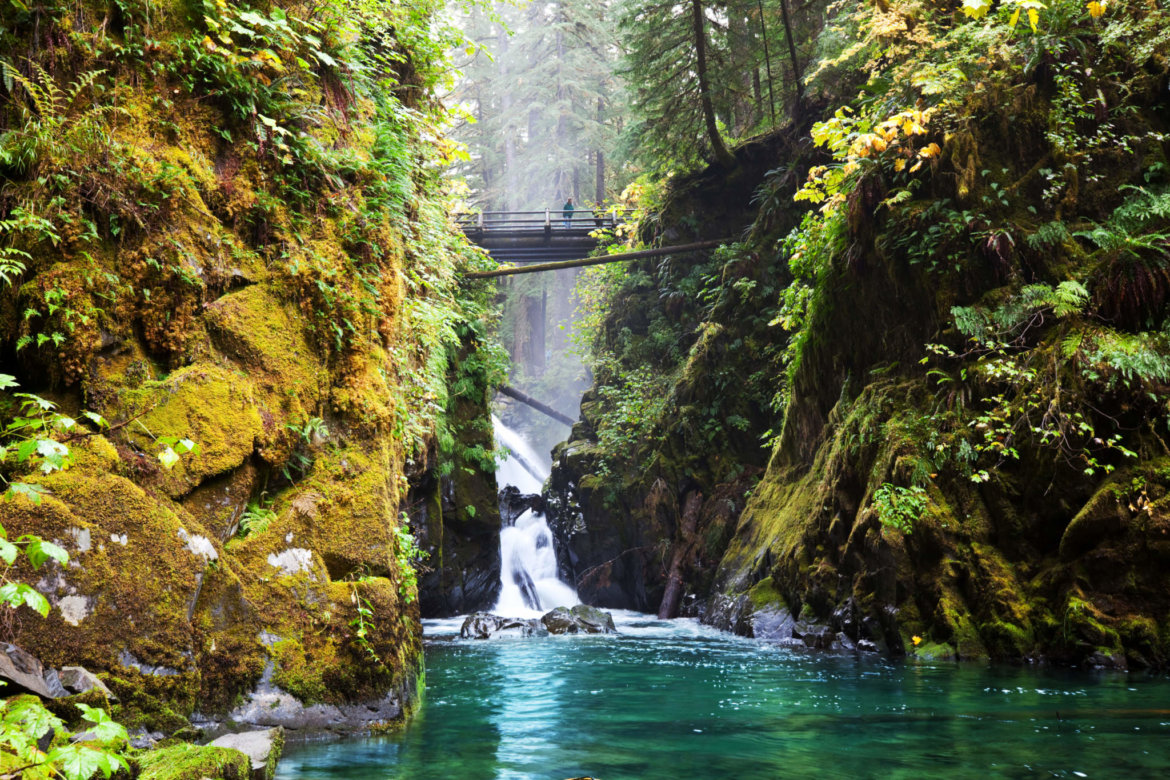
The park
The Olympic National Park manages to incorporate three completely different ecosystems, such as the mountain. The forest and the coast. So let’s see what to expect for each of these types. If you intend to undertake routes within the various areas of the park, the National Park Service website provides a very useful page that provides information on the status of the trails.
The main attractions that you can find along the beautiful coast of Washington state are part of the Olympic Coast National Marine Sanctuary. In the case that you want to undertake the many paths that go along the coast, the advice is to pay particular attention to the tides.
What may seem like a very wide and spacious beach in a short time can in fact completely cover itself with water. It is preventing you from going any further. If not actually trapping it, preventing you from going back. For this reason, the advice is to carefully read the information available on the park’s official website and to follow the information that the Rangers can provide on site.
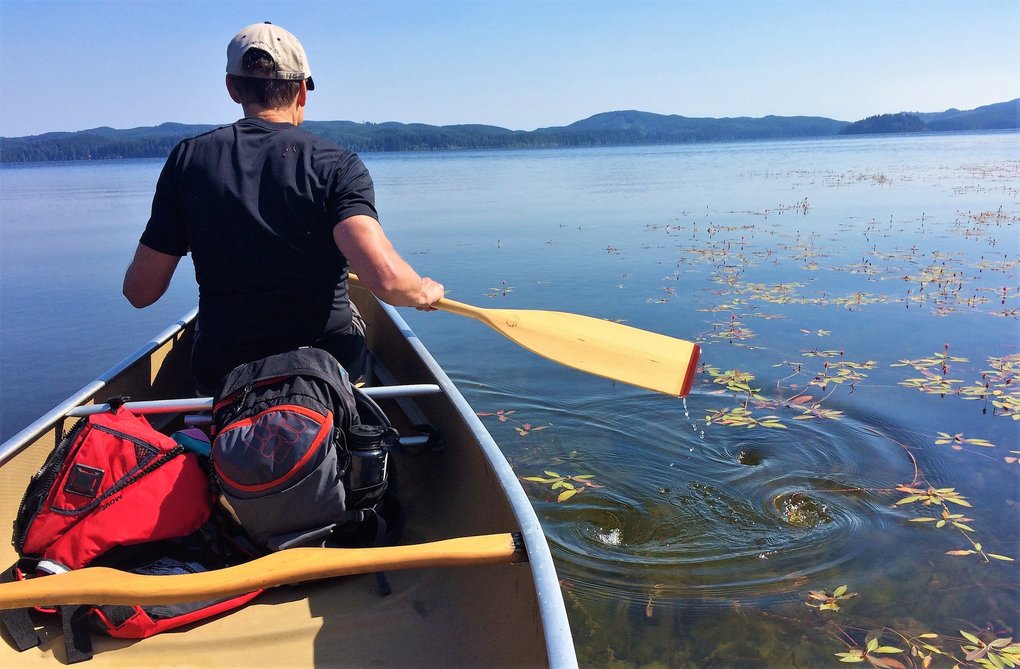
Lake Ozette
This area is reachable through the picturesque Ozette Road, surrounded by greenery. You take from Highway 112. Once you have traveled all the way you will arrive at camping areas and at the Ozette Ranger Station, where you can find maps and useful information about the area and the activities to be undertaken. The paths that are in this area of the park are all rather long to go. The most beautiful are those that will take you to the coast. I advise you to undertake them only if you have enough time and energy.
Among the best, I point out the Cape Alava Trail (about 5 kilometers one way) and the Sand Point Trail (about 4.5 kilometers one way). The more intrepid can also connect them forming a loop called the Ozette Triangle Trail almost 14 kilometers long.
Kalaloch
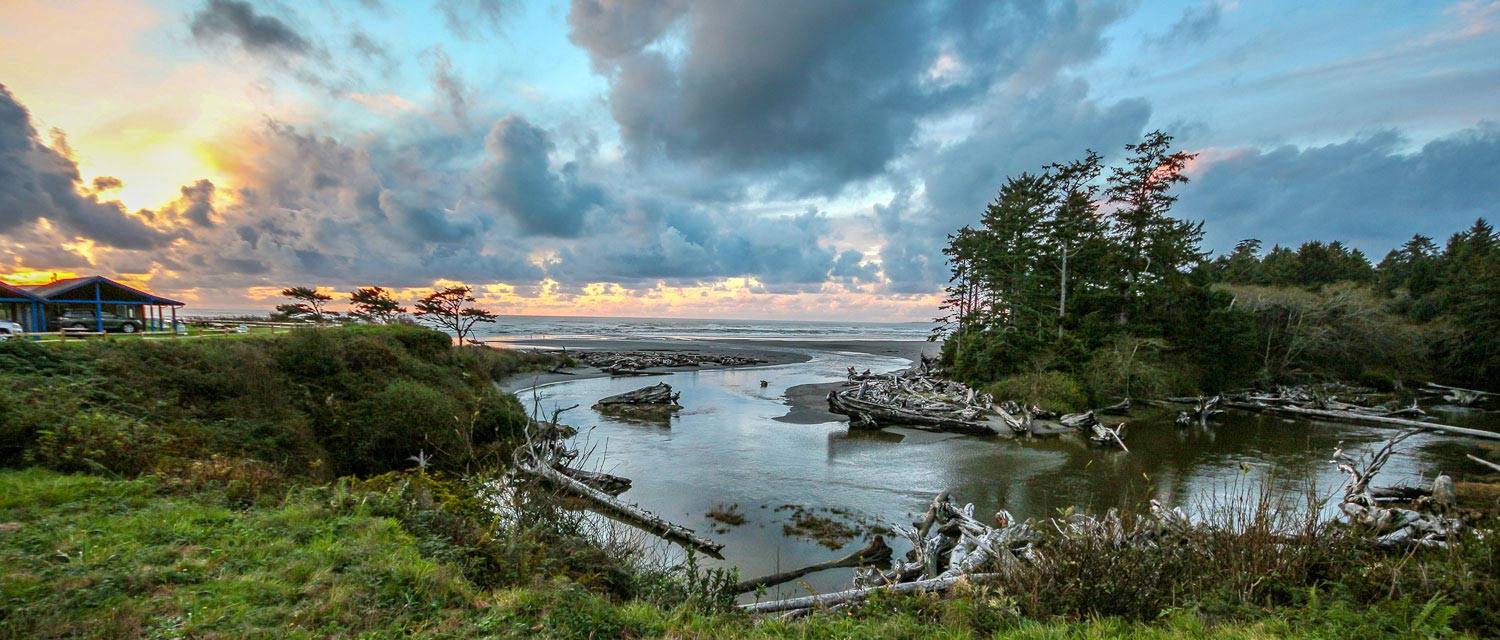
One of the most famous and visited areas of the park. Here is the legendary Tree of Life, a huge tree that continues to grow despite its roots are anchored to two spurs of rock far apart. Almost giving the impression of being able to develop in mid-air.
The Kalaloch Ranger Station is the visitor center of this area. There are some routes that are worth taking, but for those who want to combine the charm of the coast with the charm of the forests. The advice is to choose the Kalaloch Nature Trail, a simple loop of about 3 kilometers that leads from the beach to the interior.
Ruby Beach
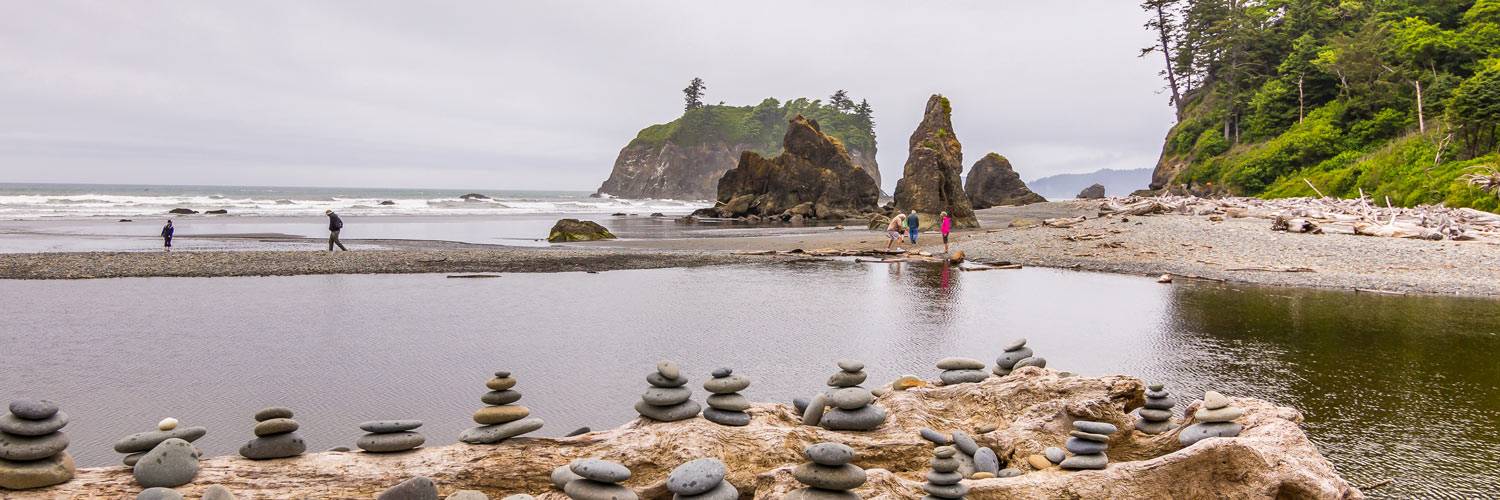
Another very popular destination along the coast, from which you can take the homonymous trail which is one of the most popular trails in the entire park. Access to it is very simple and convenient, given that the attack of the path is practically along the course of US-101. It is a question of making a very small detour at the end of which you will find a rather large car park.
The first part of the route develops inside the forest. You will come to the famous beach where you can admire the classic faraglioni. We learned about along the Oregon coast, which emerged from the water in all their grandeur.
Rialto Beach and Mora
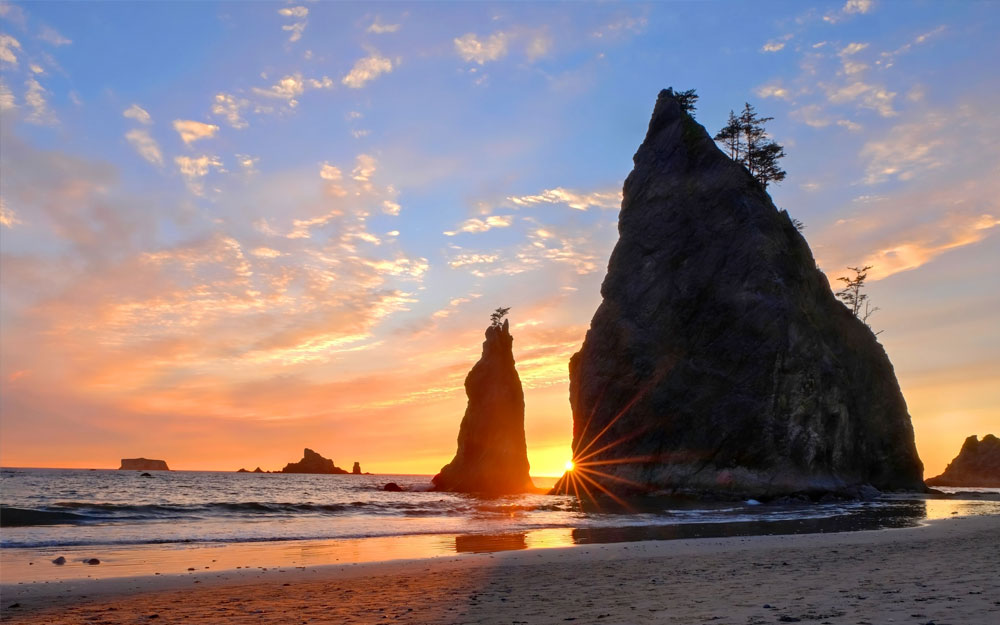
This beach is located further north than the previous ones. Also, the stacks give a unique spectacle to this part of the coast. Keep in mind, however, that from Rialto Beach you will have to walk for about 2 and a half kilometers to reach the Ole in the Wall and as many to go back.
Unlike the coastal areas where the tide was to create possible obstacles to the visit. In this case, it is the seasonality of the weather that can put the sticks in the wheels. The roads leading to the most important destinations are not open all year round.
Before you set out on your journey, the invitation is to check on the channels that I suggested previously. Visiting these areas you will observe and discover trees of hundreds of years, crystal clear lakes and spectacular views from which you will dominate the area below.
Hoh Rain Forest
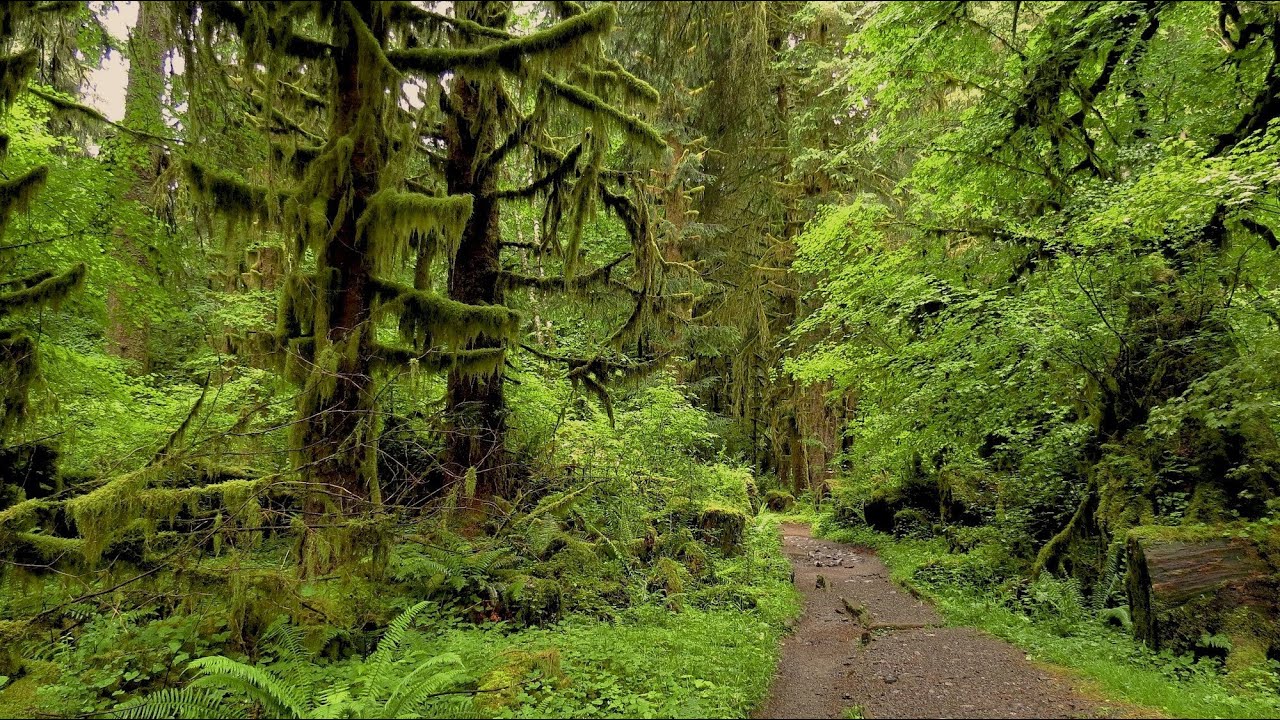
This is one of the most visited places in the park thanks to its beautiful forest that has managed to preserve itself perfectly over the years. We are in the west and the Hoh Rain Forest Visitor Center will be your reference point for finding maps and information.
Nearby there are also the main paths that lead into the forest, including the Hall of Mosses Loop (just over a kilometer) and the Spruce Nature Trail Loop (two kilometers). I recommend that you have little time available. If the weather is nice, realizing that filters through the branches of the tall trees are certainly a sight not to be missed and a perfect setting for a souvenir photo.
Quinault Lake & Rain Forest
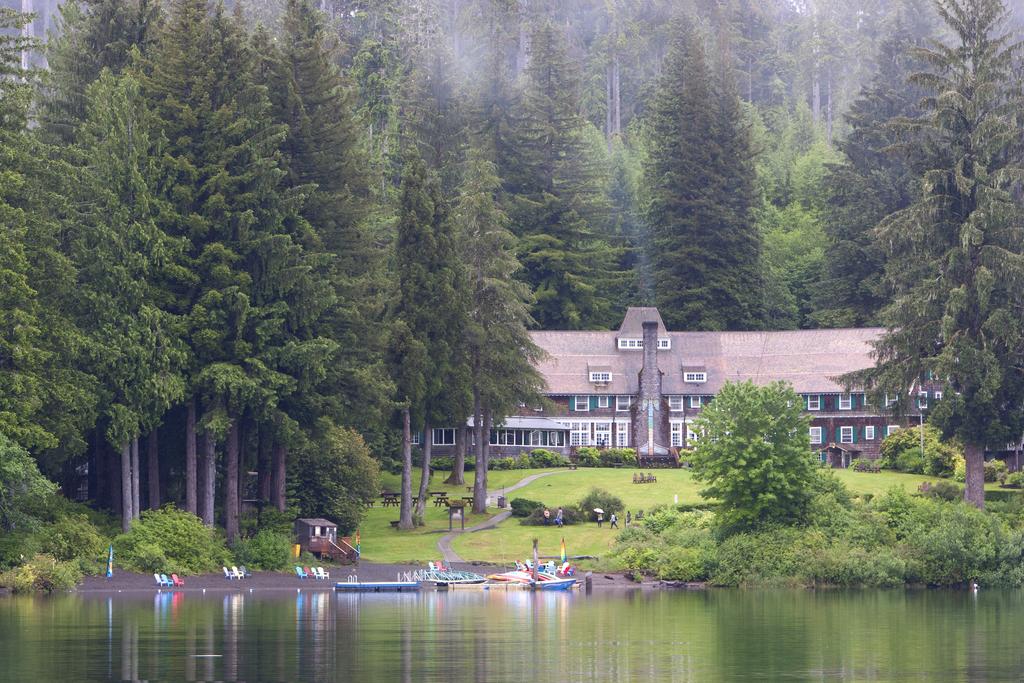
It locates the forest with the attached lake in the southern part of the Olympic National Park. It is an area that can also be visited by staying in the car thanks to a panoramic road (Shore Road) that runs along the shores of the lake.
As we will see later in the section dedicated to where to sleep near the Olympic National Park. There are also some resorts (such as the beautiful Lake Quinault Lodge). This makes it an excellent place as a point of support if you are planning an itinerary in more days in this area, and you don’t want to stray too far from the beautiful nature that surrounds you.
Lake Crescent
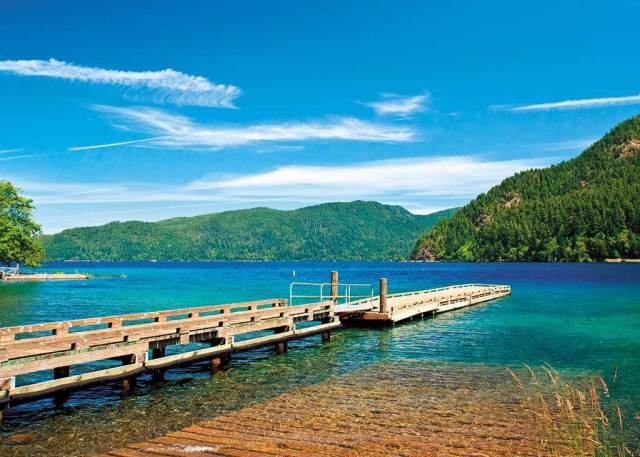
This beautiful lake with waters of a very intense blue color is certainly one of the places where it is worth stopping and taking a walk (and, if the weather permits, taking a bath).
The Storm King Ranger Station is the local visitor center while, if you want to rent a boat, you will need to head to the Fairholme Store where you can also find souvenirs and everything you need for a snack. On the shores of the lake is the popular Lake Crescent Lodge which is definitely a recommended stop for both overnight and for eating, as it has a good restaurant.
Among the recommended trails there is surely the Marymere Falls Trail (about 2 and a half miles round trip) that from the Ranger Station goes into the forest to lead you to picturesque waterfalls. It reaches a height of almost 30 meters.
The most intrepid and trained can consider taking the long (but not difficult) Spruce Railroad Trail (9 kilometers one way from Crescent to Ovington). Thanks to which you will skirt the entire northern shore of the lake which has the advantage of being passable even in the bicycle. This path develops where before was built a railway that was used to supply timber to the arms industry during the years of the Second World War.
Hurricane Ridge

Hurricane Ridge is one of the highest points. So, be careful to bring appropriate clothing even during the summer months. It is easily accessible throughout the park. Once in place, you can also understand the reason for this name: the area is in fact known to be very windy.
Who wants to collect some more information on this part of the park, besides the inevitable maps and brochures. You can head to the Hurricane Ridge Visitor Center where, thanks to a small snack bar, you can also buy the necessary equipment for lunch at the open air.
The Visitor Center is also the point from which the main trails start. Among these I point out the Cirque Rim Trail (about 2 kilometers round trip), a very simple walk, but no less beautiful. Along the back of the mountain, that from the area near the visitor center will take you to the Sunrise Point from which you can enjoy a splendid view of the mountains and the surrounding area.
Passing the Visitor Center you can drive the Hurricane Hill Road by car (but not with the camper) to a parking area where you can take the Hurricane Hill Trail (5 kilometers round trip). Once you get to the end of the path, if time permits, you will be able to see the Strait of Puget and part of Vancouver Island in the distance.
Read Our Guide To Europe’s Most Unusual Locations
Sol Duc Valley
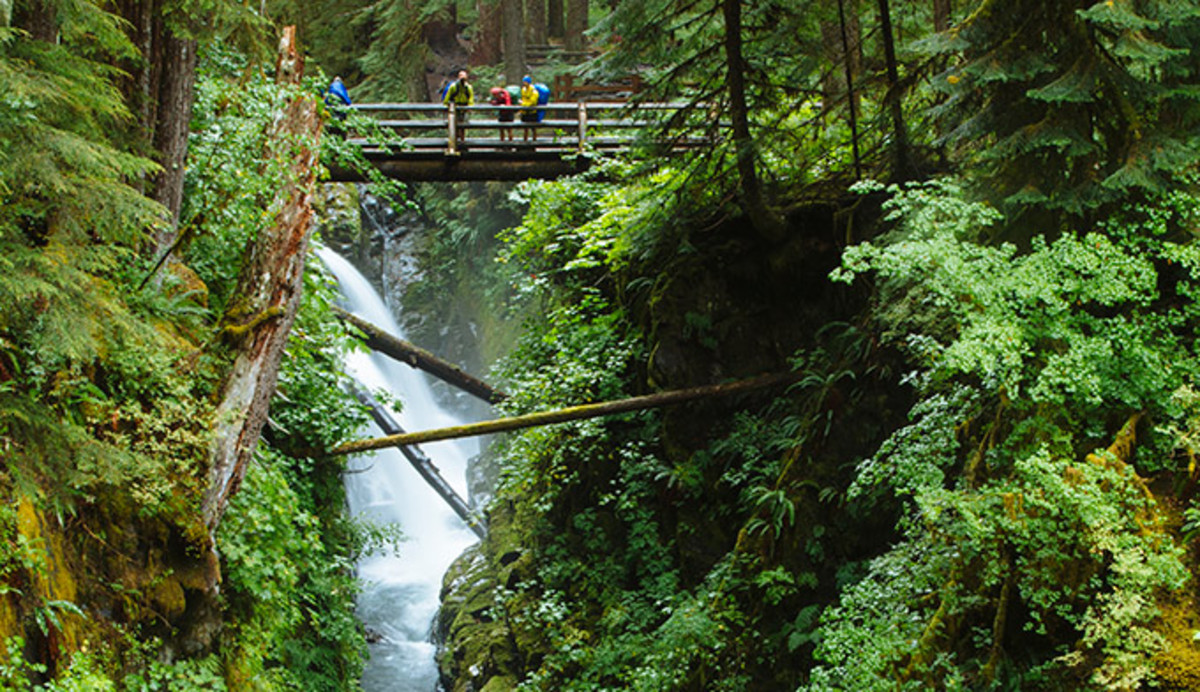
To characterize this area of the park, we find the Sol Duc river. It flows inside an ancient forest, thermal springs and a picturesque waterfall which for many is the most beautiful of the whole park.
Along the river, one of the most photographed “attractions” (if we can call it that) is the salmon that flows upstream. In order to observe them as closely as possible, a privileged observation point was also created: the Salmon Cascades Overlook. The recommended time of the year to see this phenomenon is from late summer to fall.
Here are some recommended routes to explore the area:
Sol Duc Falls Nature Trail (2 and a half miles round trip) the shortest route for those who want to observe the falls without too much work, or have little time available.
Deer Lake Trail (10 kilometers round trip): a moderate difficulty route that takes you inland to the shores of the small but pretty Deer Lake.
Lovers Lane Loop (about 9 and a half kilometers) surely the most fascinating and scenographic route, which from the Hot Spring Resort car park will take you through the forest following the course of the Sol Duc River until it reaches the falls.
If you want to find accommodation in the area you can opt for the Sol Duc Hot Springs Resort which makes thermal springs (which can be accessed even if you don’t stay overnight upon payment of $15 per adult) its main strength.
Lake Cushman
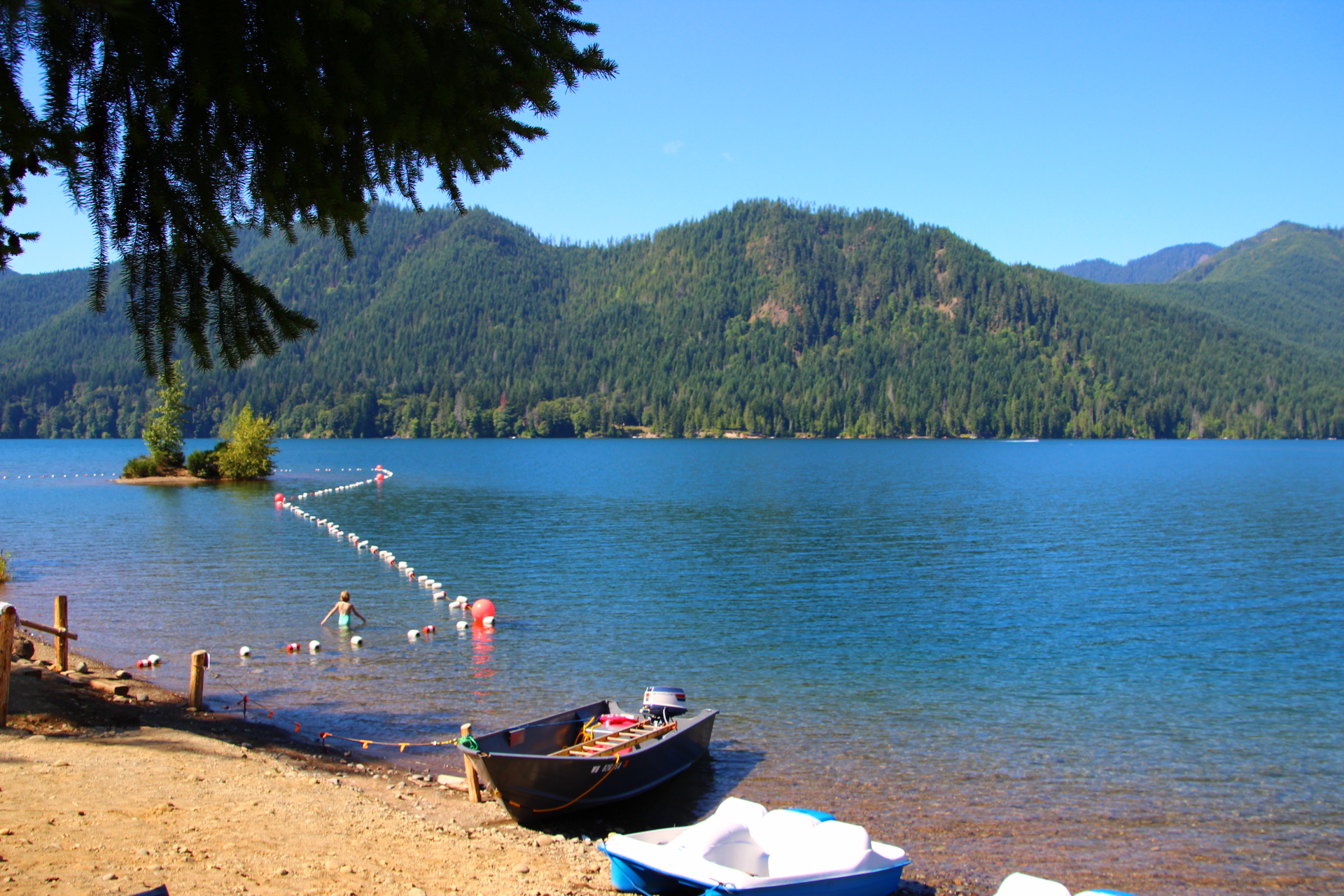
For this area, we must move to the southern part of the park. Here the functions of the visitor center are the Staircase Ranger Station, which is located beyond the northern tip of Lake Cushman, from where numerous paths depart into the forests along the course of the Skokomish River. The lake is a splendid body of water with an intense blue/turquoise color set between the mountains.
Among the recommended trails, I mention the Staircase Rapids Loop. It is also suitable for those with limited time. This is just over 3 kilometers thanks to which you can still have a taste of what this area has to offer. The most spectacular passage is certainly represented by the wooden bridge through which you will pass over the river. The Shady Lane Trail (about 4 kilometers round trip) will instead take you to the shores of the lake from the Ranger Station.
How to organize an itinerary
The best way to organize an itinerary inside the Olympic National Park is to keep in mind your points of support for overnight stays. Based on those you can organize the visit and optimize travel times to the fullest. An account is if you plan to leave and return to Seattle. In this case, you will have to consider at least four hours just to go and come back. So, forget about making a complete tour of the park with only one day available.
Best time of the year to visit
To establish what is the best time of a year to visit Olympic National Park. It is necessary to make a premise that does not imply the quality of the things that can be seen, but rather the ability to visit the park in its entirety. Only during the summer months in fact (from June to September) are all roads and excursions open and accessible (except for particular complications).
During the winter months instead (from October to May) the temperatures become more rigid and the chances of finding a less than optimal meteorological situation increase (take a look at our article on the climate of Seattle to get a rough idea). This is why some roads can be closed as a precaution or for real needs. If you want to visit the Olympic National Park during the winter months, I welcome you.














Post Comment